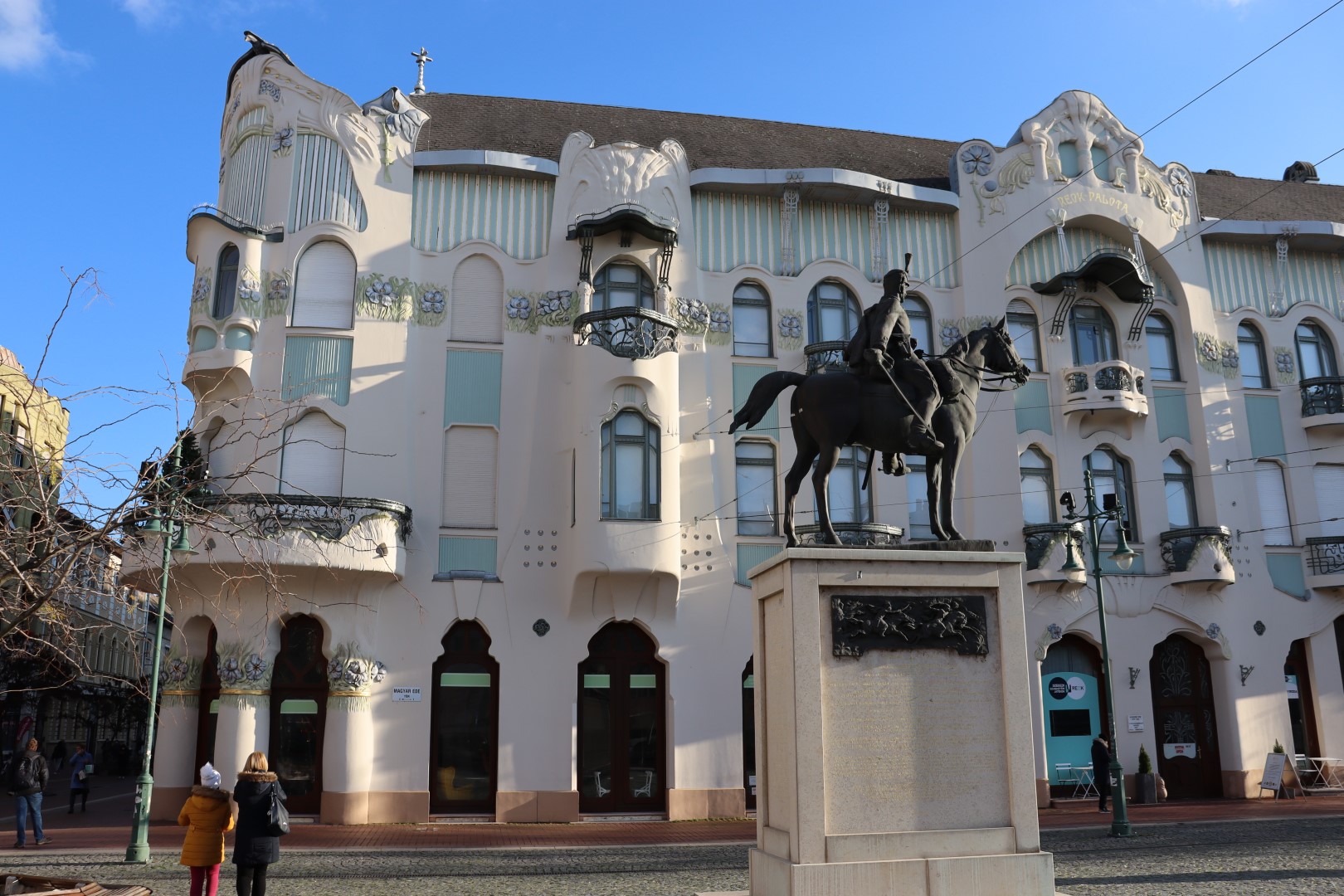MANCI BäCK
Contributions to culture and science
In 1915 she opened a studio in the Patzauer House in Kölcsey Street, Szeged. The 18 April 1915 issue of Szegedi Napló features a long report in the art section – entitled “Bäck Manci’s studio”. The article specifically referred to the studio’s uniquely refined furnishings, which the artist had ordered from Vienna. She became known in the intellectual circles of Szeged through Gyula Juhász. She met László Moholy-Nagy in the studio of sculptor Sándor Gergely, and she photographed reproductions for Moholy-Nagy in exchange for pictures. The notable members of the intellectual world such as Ferenc Erdei, Mária Mezey, Anna Zádor and Albert Szent-Györgyi often posed for this delicate and sensitive artist. Over the years, she has worked in studios in Kárász Street (in houses 8 and 11) and in Tisza Lajos Boulevard 42. The Szeged Museum owns a series of her paintings from 1926, which she made of a part of the city, Palánk, that was condemned to demolition. There is also a written record of her donation to the museum of a Moholy-Nagy chalk drawing titled Woman Doing Handiwork. In her old age, she complained that several of her Moholy-Nagy paintings had been lost amidst war, removals, widowhood and other hardships.
Short biography
Bäck, Manci, born Margit Bäck (Vágvecse, 25 December 1891 – Budapest, 9 January 1989) is a little known Hungarian photographer and photographic artist, one of the most outstanding figures of Hungarian photography, and within it, of Szeged photography. Through Gyula Juhász, she was also known in intellectual circles and took portraits of many celebrities. Manci Bäck was born in 1891 in Vágvecsé, in Felvidék, to József Bäck, a wood merchant, and Berta Singer to an Israelite. In 1907, she graduated with honours from the Szeged High School for Girls. There she distinguished herself with her talent for reciting poetry: the newspaper Szeged és vidéke (Szeged and Surroundings), writing about the graduates, described her as a girl of “uncalled for simplicity and therefore a very fine reciter”. In 1921 she married Dr. Lajos Szekerke, a lawyer, five years older than her, and had a daughter, Dr. Mária Szekerke, in 1924. They lived at 11 Csekonics Street at that time, but later moved to Tisza Lajos Boulevard 56, and in the dining room of their apartment on the second floor of the Reök Palace she established her studio. After the Second World War, her studio was nationalised in 1950 and she gave up all photographic activities. By then widowed, she moved to Budapest to live with her daughter, where she remained until her death in 1989. She spent the last ten years of her life bedridden, unable to move.
Interesting facts
Her early paintings were influenced by the Viennese school. She created picturesque photographs, rich in subtle shades, with backgrounds washed towards the edges. Her settings are reminiscent of Art Nouveau, showing sensitivity and spiritual richness. The characteristically delicate and painterly portraits and nudes are outstanding, but her motion studies and vedutas are also of considerable artistic value.

